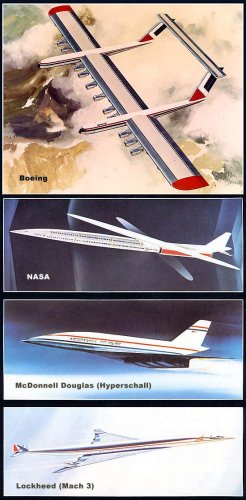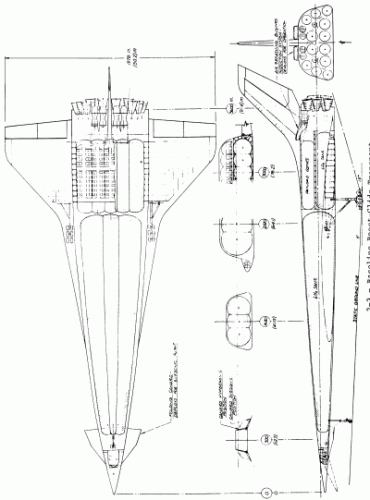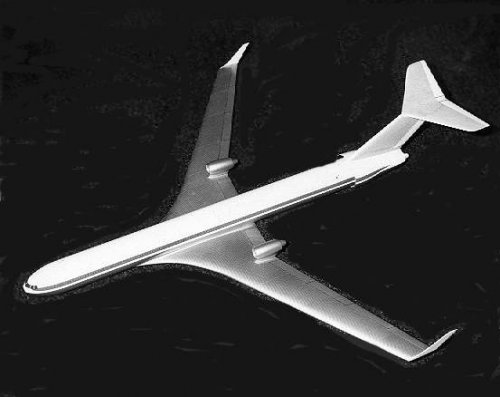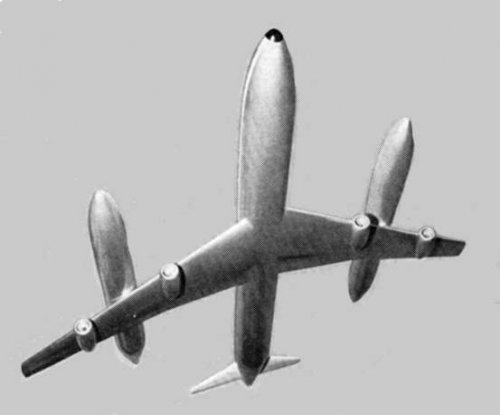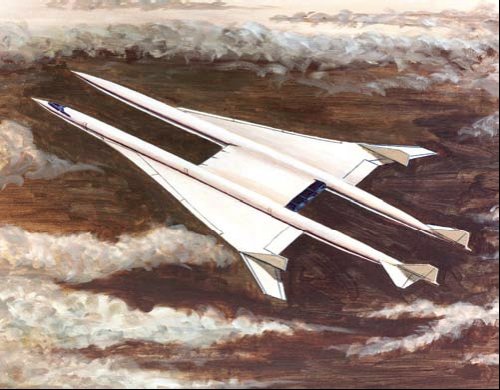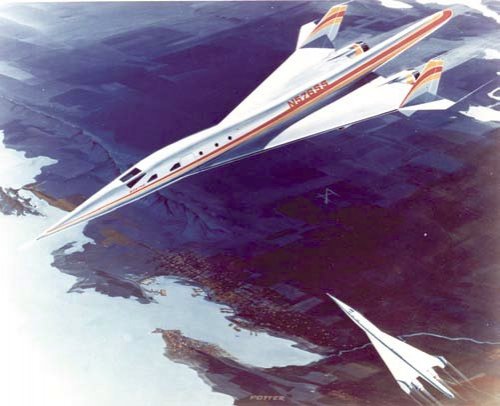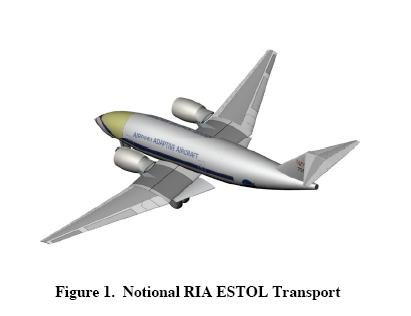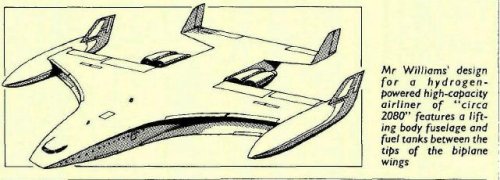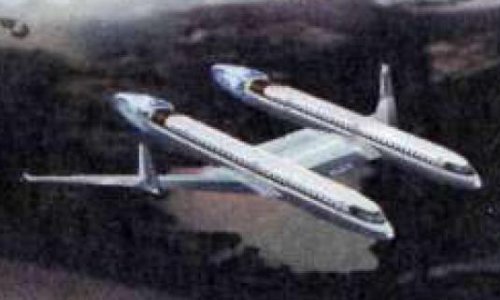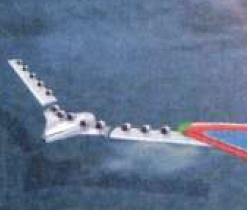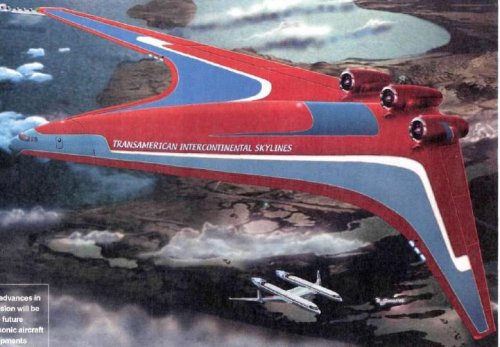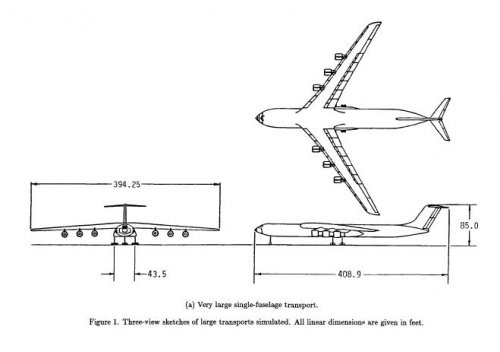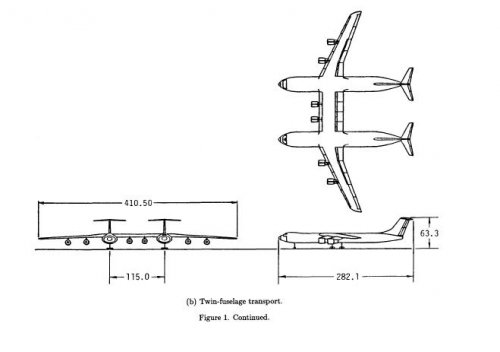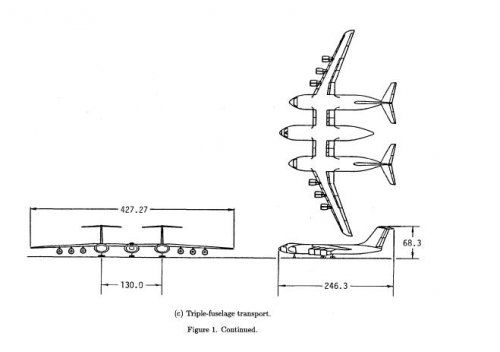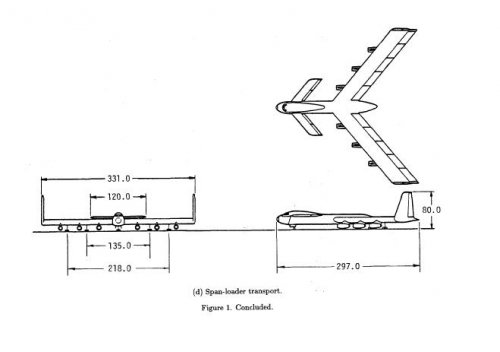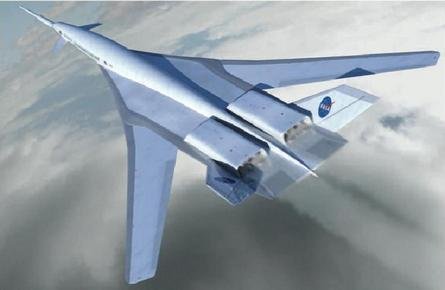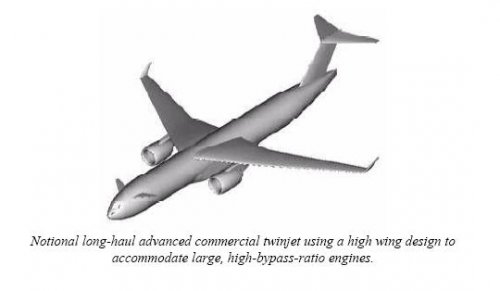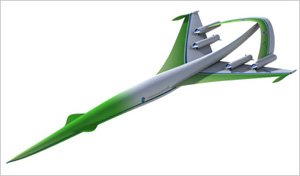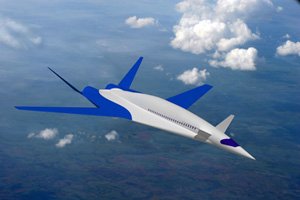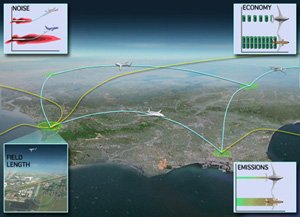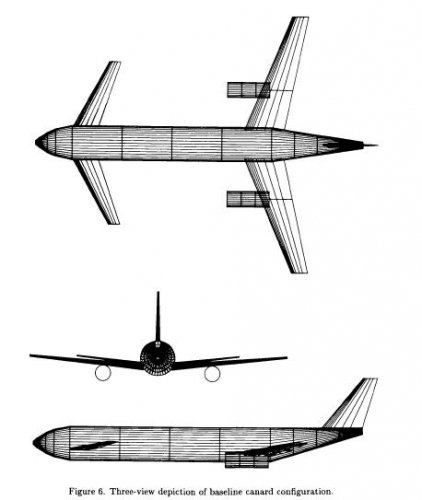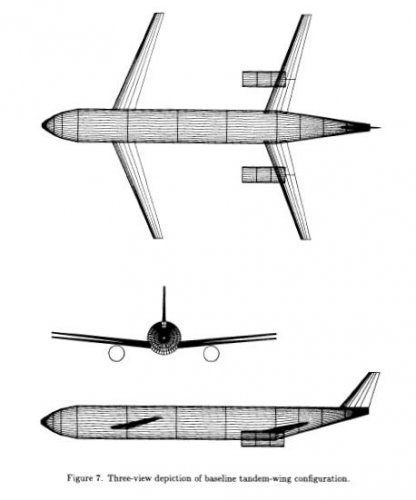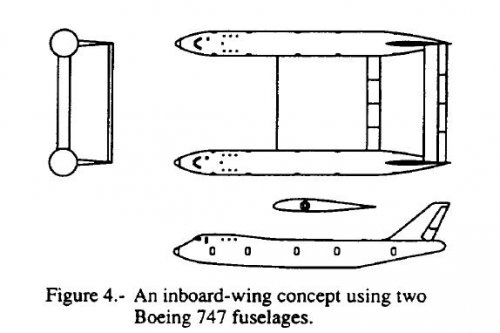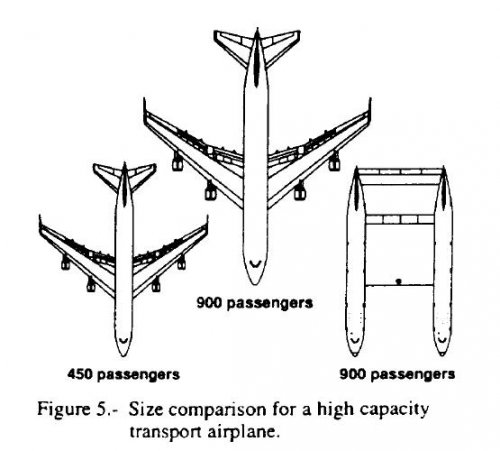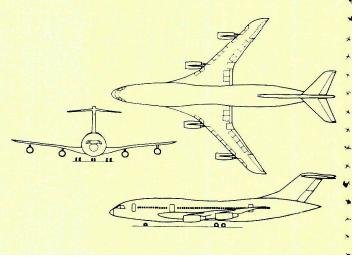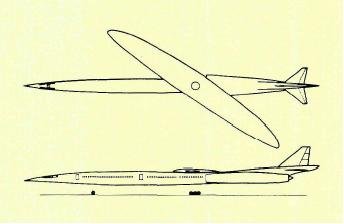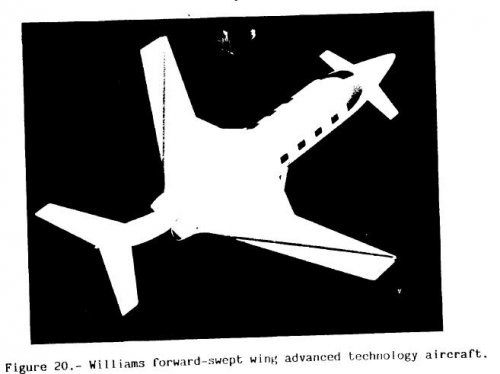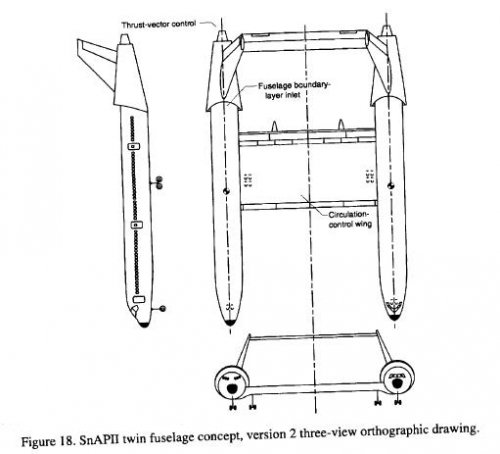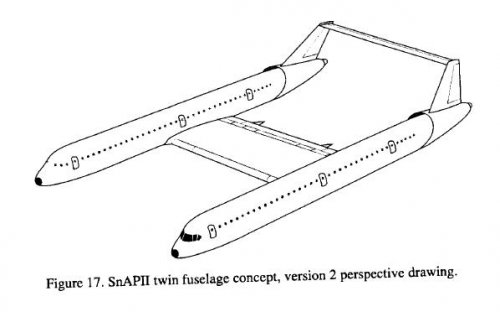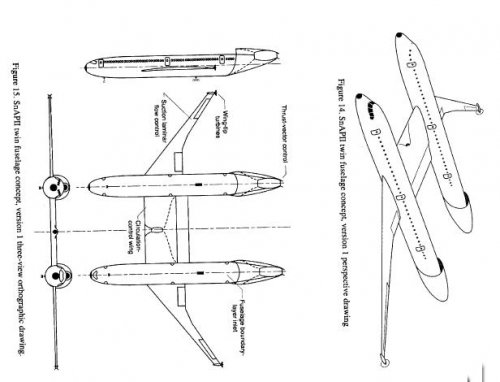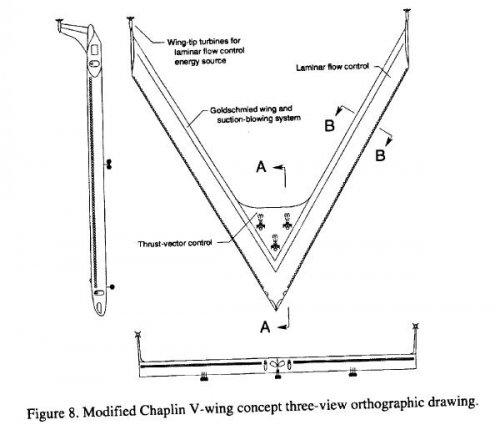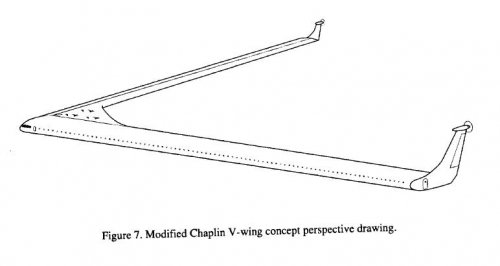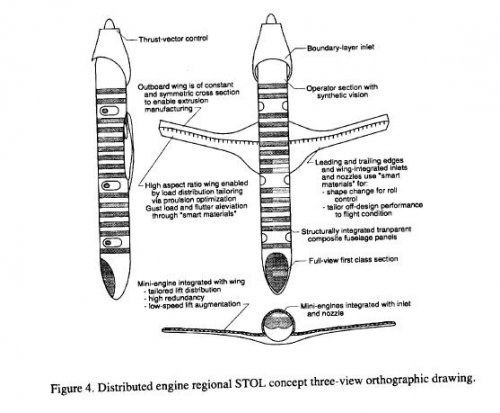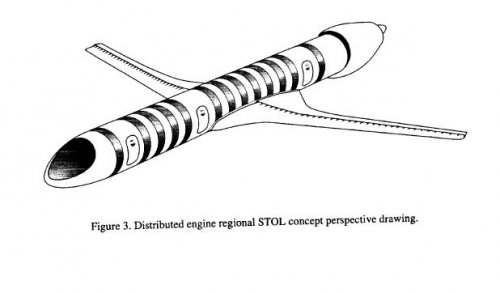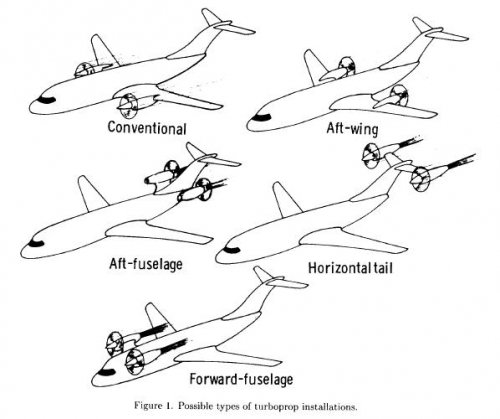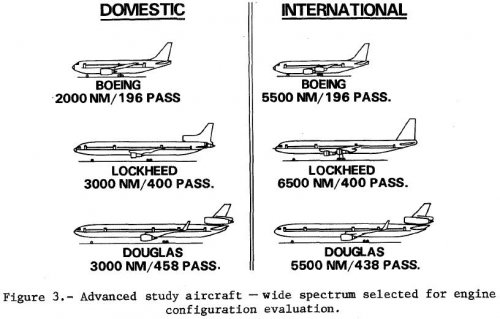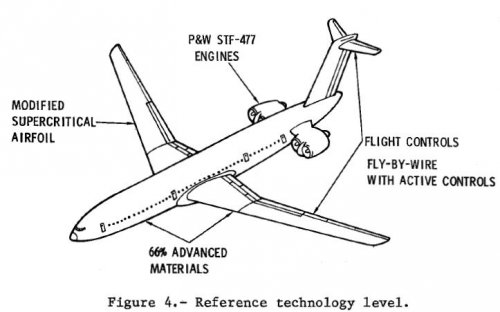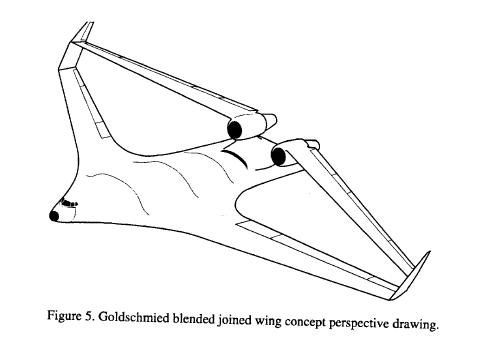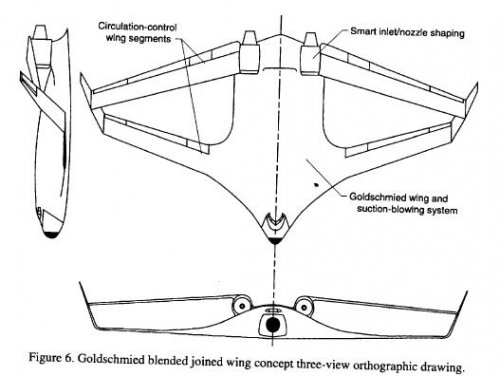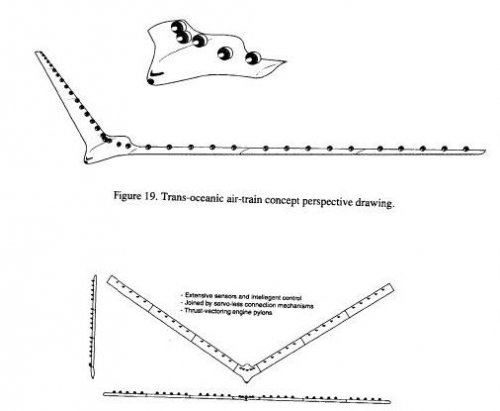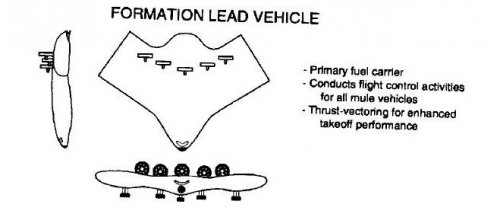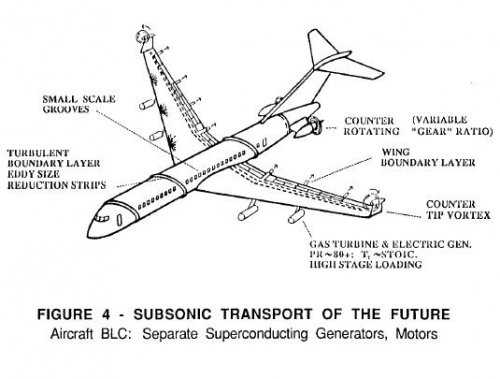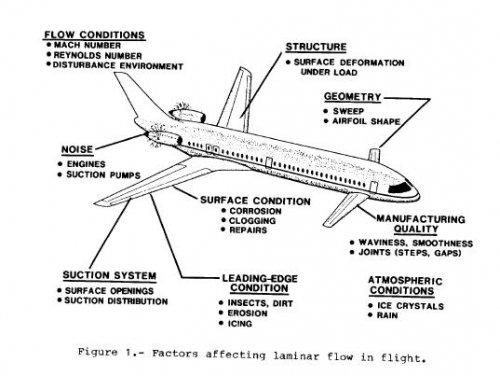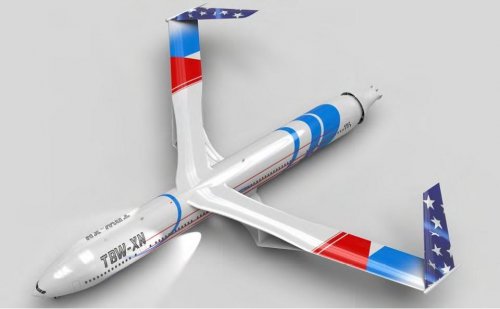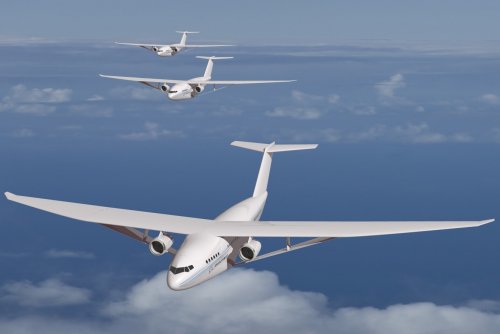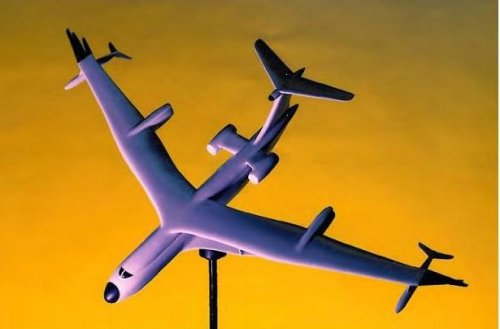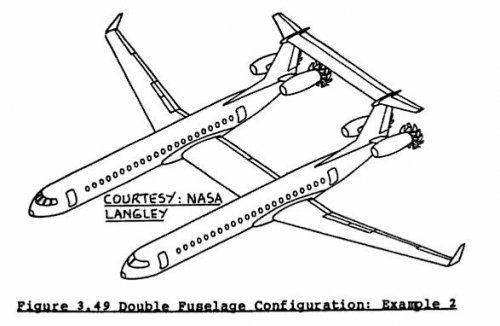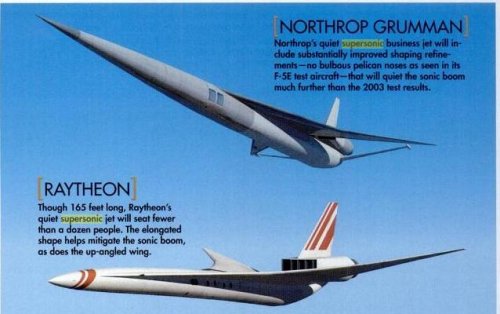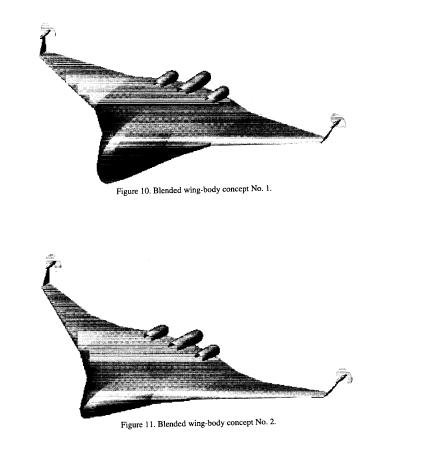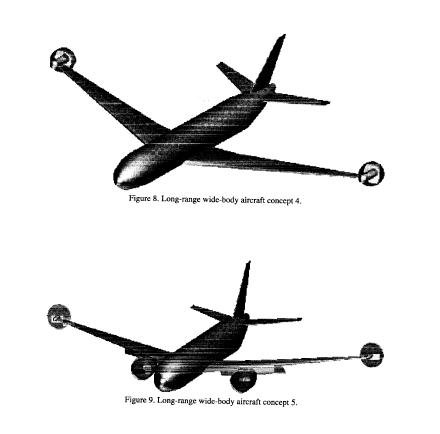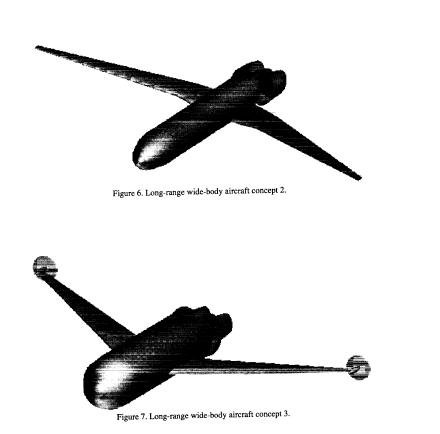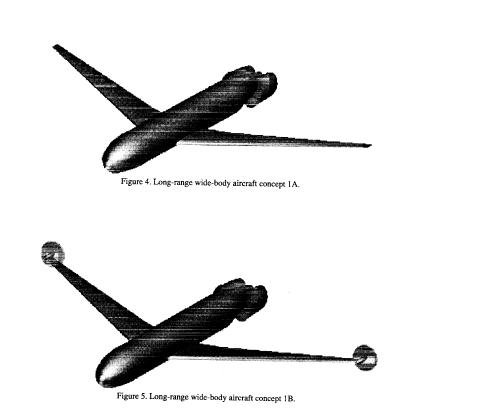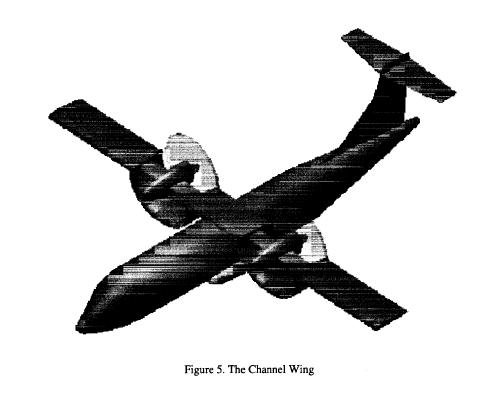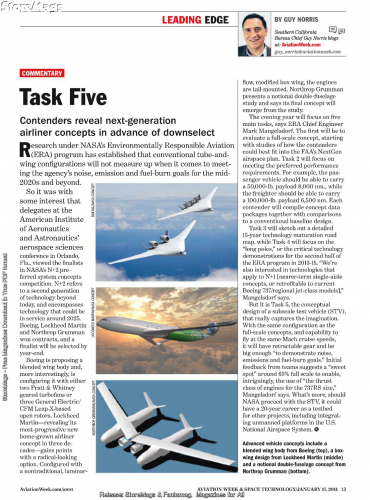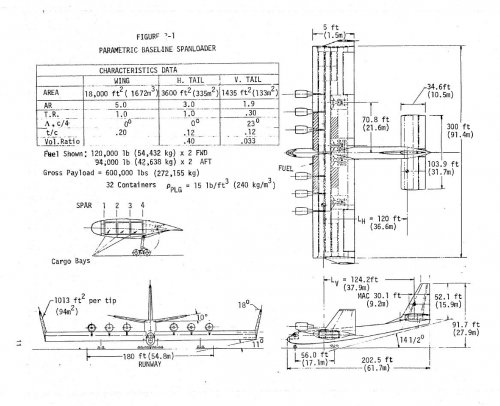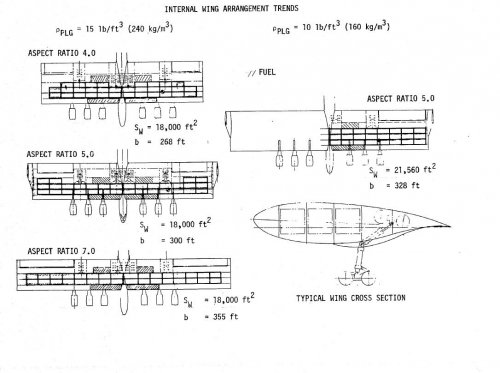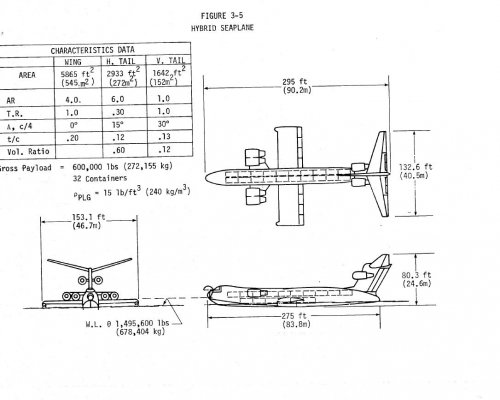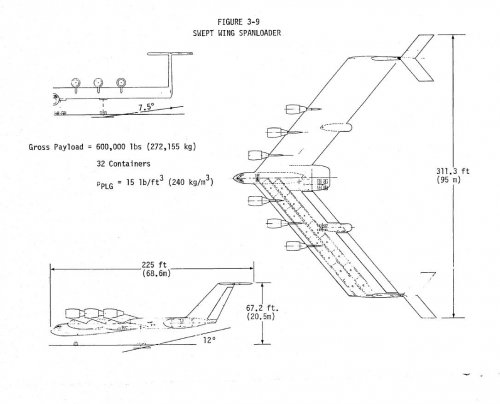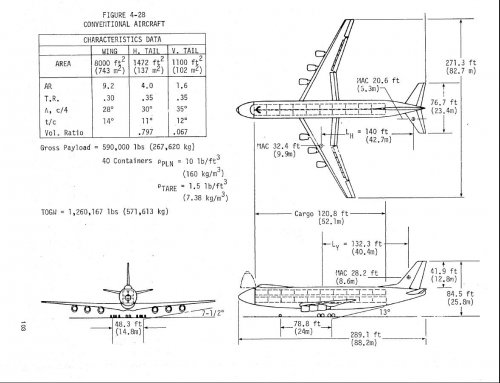The objective of the study documented in this report is to enumerate and quantify the benefits of span distributed loading concepts as applied to future commercial air cargo operations. A two phased program is used to perform this assessment. The first phase consists of selected parametric studies to define significant configuration, performance and economic trends. The second phase consists of more detailed engineering design analysis and economic evaluations to define the technical and economic feasibility of a selected spanloader design. A conventional all-cargo aircraft of comparable technology and size is used as a comparator system.
The investigations of this report generally substantiate the technical feasibility of the spanloader concept with no new major technology efforts required to implement the system. However, certain high pay-off technologies such as winglets, airfoil design, and advanced structural materials and manufacturing techniques need refinement and definition prior to application. In addition, further structural design analysis could establish the techniques and criteria necessary to fully capitalize upon the high degree of structural commonality and simplicity inherent in the spanloader concept.
The most economical spanloader configuration indicated by the studies is a 40 degree swept wing design with twin outboard mounted empennages. This configuration showed approximately 13 percent lower direct operating cost than the conventional aircraft. Additional configuration optimization items could increase this value to about 15 percent.
The lift-to-drag ratios (L/D) of the typical moderate aspect ratio (4 to 5) spanloader configurations using large effective winglets can be as high as 21. This is considerably greater than today's jet aircraft but slightly less than an advanced high aspect ratio conventional aircraft. These high L/D values result from the substantial increase in effective aspect ratio resulting from the use of winglets, the high flight Reynolds number with the attendant reduction in skin friction coefficient, and the use of negative static stability margins with the resulting reductions in tail size and trim drag.
The weight empty-to-gross weight ratio of the spanloader can be as low as .26 compared to .32 for the advanced conventional aircraft. This improvement is anticipated from the distributed span loading feature of the concept. The unit weight of the spanloader wing, in fact, is approximately half that of the conventional wing. The impact of these considerations on aircraft procurement cost is a potential price reduction of 15 to 20 percent compared to the conventional aircraft.
The spanloader offers a rapid load and off load capability because of its multi-channel arrangement and the loadability from both wing tips. A potential operational problem exists, however, relative to the compatibility of the spanloader with existing facilities because of the large wing span (approximately 300 feet) and the large gear tread (approximately 200 feet).
The payoffs and incentives using the spanloader concept as a basis for a 1990 all-cargo dedicated air freight system are sufficient to warrant further study and detailed analysis in specific areas. These areas of additional study are identified in the report.

